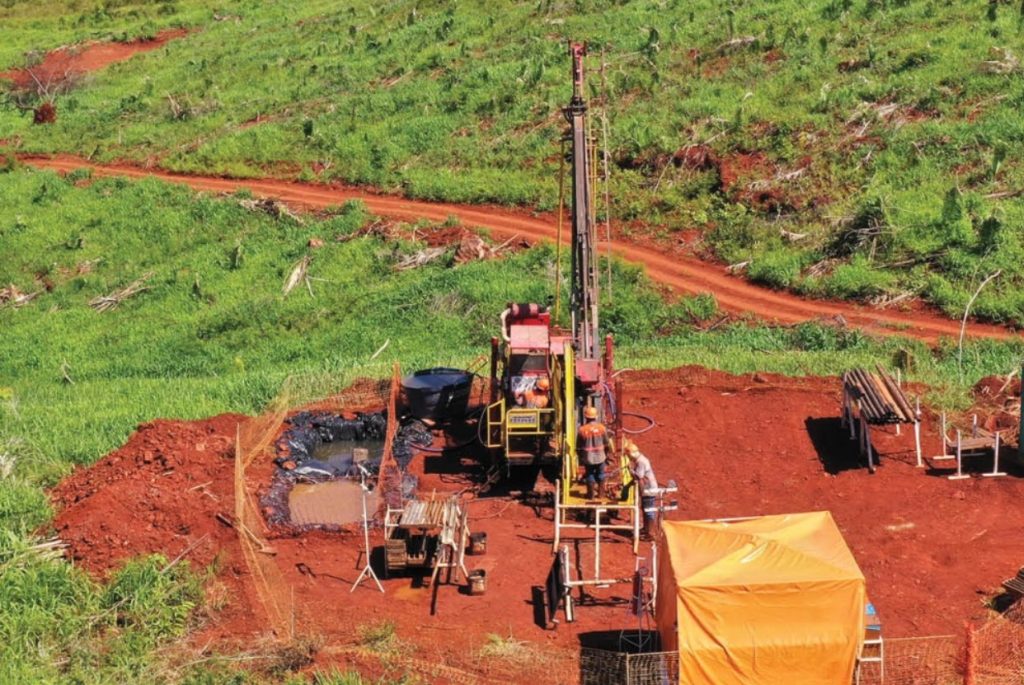Bravo releases resource estimate for Brazil PGM-nickel project

Bravo Mining Corp. [TSXV-BRVO, OTCQX-BRVMF] has completed an initial mineral resource estimate (MRE) for its 100%-owned Luanga platinum-rhodium-gold-nickel project in the state of Para, Brazil.
Bravo’s maiden and pit-constrained MRE consists of 73 million tonnes of grade 1.75 g/t PdEq or 4.1 million ounces of PdEq in the indicated category, including 4.6 million tonnes of 1.43 g/t PdEq of oxide material. On top of that is an inferred resource of 118 million tonnes of grade 1.50 g/t PdEq or 5.7 million ounces of PdEq, including 10.0 million tonnes of 1.30 g/t PdEq of oxide material.
Also included in the MRE are 89,500 tonnes of nickel in sulphides in the indicated category and 104,600 tonnes in the inferred category.
Bravo shares advanced on the news, rising 1.25% or $0.03 to $2.45. The shares are trading in a 52-week range of $5.24 and $1.60.
Bravo is a Canadian and Brazil-based mineral exploration and development company with a focus on advancing the Luanga project, which is located in Carajas Mineral Province in Brazil. The project benefits from being in a location that is close to operating mines, with excellent access and proximity to infrastructure, including road, rail and clean and renewable hydro grid power.
Luanga is a layered mafic-ultramafic complex consisting of a 6.0-kilometre across (on surface), and up to 3.5 kilometre wide ovoid-shaped intrusion, which hosts 8.1 kilometres (strike length) of mineralization.
The known mineralized system being evaluated by Bravo is represented by magmatic layers enriched in palladium, plus platinum, with minor rhodium, gold and nickel, which together are referred to as PGM-AU-NI.
Bravo recently raised over $25 million from an initial public offering and concurrent $5.26 million private placement.
“The delivery of our maiden mineral resource estimate after only 15 months from our IPO is arguably Bravo’s most significant milestone to date,’’ said Bravo Chairman and CEO Luis Azevedo. “The resource estimate underscores Luanga’s size, grade, and potential open-pittable nature, which is supported by straightforward metallurgy,’’ he said.
“On top of such attributes, Luanga has the potential to be one of the few multi-million-ounce sources of such critical and scarce PGM and nickel metals outside regions challenged by political instability, infrastructure shortcomings and permitting complexities.’’
Azevedo went on to say that there remains substantial immediate growth potential to this initial MRE. A fully-funded 63,000-metre infill-step out, and exploration drilling program is currently under way.
“The drilling program is now following up on the encouraging results beyond the current MRE limiting pit constraints, in addition to the continuation of the trenching program, which has proven to be an effective way of assessing oxide mineralization potential,’’ he said. “Further, we are progressing with the drilling of the recently identified priority electromagnetic anomalies, which targets massive and semi-massive sulphides, adding to the prospectivity for new discoveries and deposit types at Luanga.’’
